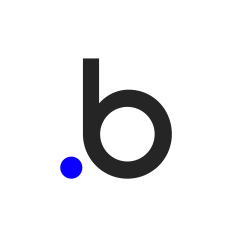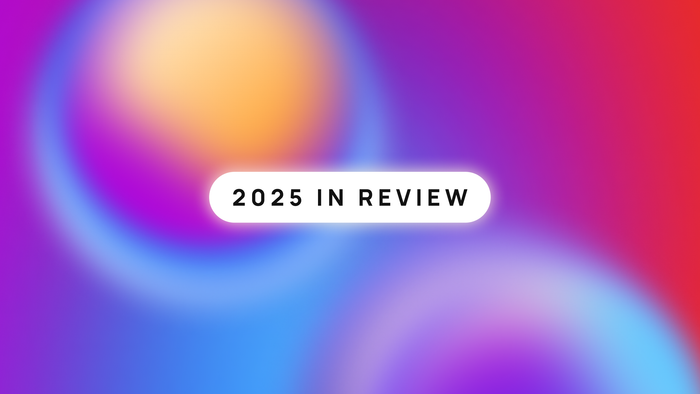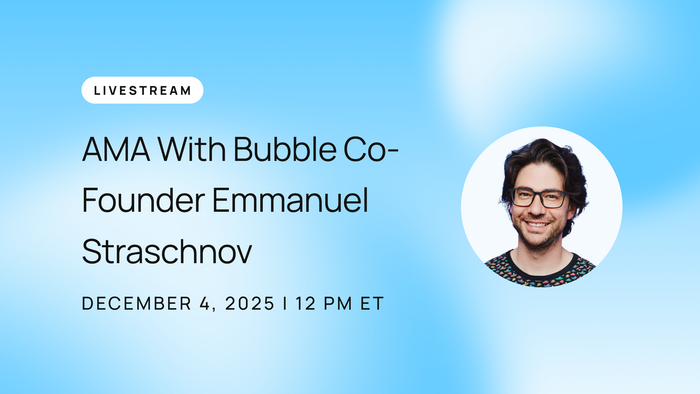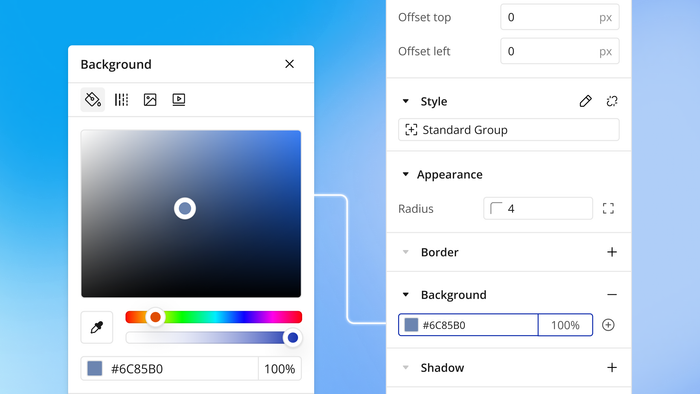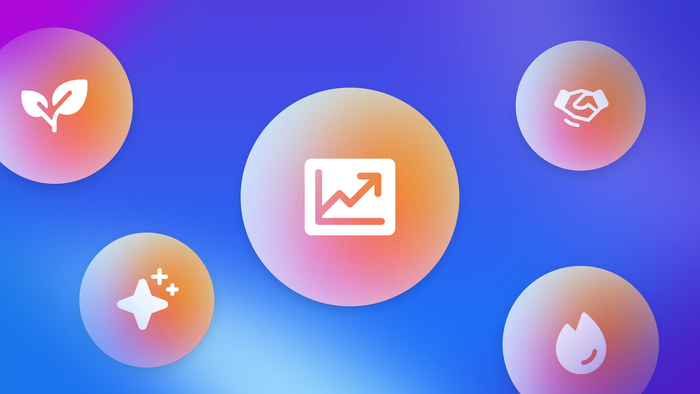Prototypes are obviously necessary for physical products — but they’re even more necessary for digital products like mobile apps.
Imagining how a self-warming mug might function is pretty straightforward. Imagining how an app might function can take many different directions.
Thus the value of a mobile app prototype.
In this article, we’ll break down exactly what mobile app prototypes are, why all startups should create one, and how to build an effective app prototype, step-by-step.
What is a mobile app prototype?
A mobile app prototype is an interactive mockup of the mobile app you’re planning to develop. They serve multiple purposes:
- Giving your developers a blueprint to work from during app development
- Showing investors an outline of your app idea when raising funding
- Doing initial user testing and validating core concepts and features
Proof of concept vs. prototype vs. MVP
Prototypes aren’t the only way to validate your ideas and build an early version of your product. A proof of concept or even a MVP (minimum viable product) could be a better option.
Here are the differences:
| Early product type | What it is | Pros | Cons |
|---|---|---|---|
| Proof of concept |
A basic, early version that tests technical feasibility. Usually stays internal and is the first stage in building. |
|
|
| Prototype |
An interactive mockup of your product, with a focus on functionality, design, and user flows. |
|
|
| Minimum viable product (MVP) |
A functional early version of your app limited to core features. Helps validate your product-market fit with real users. |
|
|
Whichever of these you’re thinking of building, a major downside is that they typically don’t go anywhere long-term. That is: They’re designed to be built, validate the idea, and then later scrapped and rebuilt as the “real product.”
At Bubble, we think of prototypes a little differently. You shouldn’t have to spend a lot of time and energy on prototypes and MVPs that are designed to be scrapped.
Instead, we built Bubble so startup founders can build an app prototype that has real functionality right from the start (without needing to code!). Creating a functional mobile app as a prototype reduces your launch and product development timeline and generates more valuable user feedback sooner.
Types of mobile app prototypes
Even within the category of a simple prototype, mobile app prototypes can vary drastically, from basic “napkin sketches” or wireframes of your app’s screens to interactive designs that look and feel like a real app.
All of these mobile app prototypes fall on a scale from low-fidelity to high-fidelity.
- Low-fidelity prototypes are typically limited to static wireframes and screens. They typically illustrate the look and feel of a mobile app, and are helpful for communicating big ideas and figuring out the user flow.
- High-fidelity prototypes more closely resemble your app as it'll actually function. They allow you to create interactive designs and can include audio, interactions, and other visual effects to realistically simulate the actual build.
There isn’t necessarily a “better” option for prototyping. The key is choosing a level of fidelity for your prototype that accomplishes your goals with prototyping (Sketching out the user flow? Validating with users? Committing to UI before the real build?) without spending too much time building out details too soon.
Why build a prototype of your app?
App prototyping is a must for startups, even for (especially for!) those trying to move fast. Building on a platform like Bubble makes it easy to speed up your product development process, but starting with a prototype (of sorts) still provides a lot of benefit.
Better visualize and share ideas
One of the biggest and most recognized benefits of prototyping is that it allows you to better visualize, communicate, and share your app ideas.
“[Prototyping] helps to visualize your ideas to get you in the right visual context for planning the execution and implementation. In our mind, we picture the idea [of our app] very generally, and the prototype helps to put those ideas into something more tangible and more concrete to act upon.” — Vlad Larin, Co-Founder at Zeroqode
As Vlad Larin points out, it’s much easier to test and iterate on a tangible prototype than on a nebulous concept.
Even if you’re building solo, a prototype helps you test and validate ideas for mobile for yourself. For example, when you build on Bubble’s native mobile builder, you can easily see how your app ideas translate to mobile with built-in mobile app design guidelines. That way, you’re able to see exactly how to translate your vision for your app into concrete designs that will make sense for the end user.
If you are working with a team — or even one other person — prototyping helps you get your whole team on the same page earlier in the development process.
“A prototype can be a really useful way to align on the UI and UX of the product, whether it’s an MVP or a larger build.” — Vlad Leytus, co-CEO of Airdev
Mobile app prototyping ensures your development teams are all working toward the same goal, provides a roadmap for development, and reduces the amount of pivots and major changes you’ll need later.
Of course, if you’re building on Bubble, you don’t need a whole development team — many founders build their app or prototype themselves, or with one or two other product developers. In any case, a good prototype helps you stay focused on your big idea and reduces the amount of major changes needed down the road.
Validate ideas and feasibility
Creating an app prototype also enables you to better estimate the costs associated with the final product’s development.
“Prototyping allows you to visualize ideas, communicate design concepts clearly, and gather early feedback. It helps identify usability issues, refine user experience, and can significantly reduce the time and cost of development by catching potential problems early.” — Rodrig Naska, Product Lead at Revido
Catching potential problems — both product-related and technical — in the prototyping process can reduce the cost of building. But prototyping also makes it easier to understand the resources needed and the feasibility of your project.
Better yet: A free prototyping tool like Bubble lets you refine and iterate your ideas, design concepts, and UI without adding more tool costs to your bottom line. When you’re ready to build, you can keep going — adding real functionality and getting your app ready to launch — for free on Bubble until you’re ready to go live.
You can also validate ideas throughout the entire process with user testing. Although user testing at this stage is by necessity pretty controlled (since your app prototype generally isn’t functional), it can still provide valuable feedback and direction for iteration before you launch.
If you build on Bubble, you can create functional prototypes and launch for real users, allowing you to go deeper with user feedback sooner. BubbleGo also allows you — or user testers — to preview your functional app on mobile devices, before you launch in the App Stores, giving you more options for user testing.
Reduce technical debt
Validating ideas early also helps reduce technical debt and expenses from having to make more changes down the line.
“Prototypes are lightweight ways to test out a concept before committing it to your product. Building and rebuilding in your actual app can become messy and create tech debt over time, so you can minimize that by starting with prototypes.” —Maria Posa, Bubble Development Manager
The earlier in the app development process you can test your designs and potential functionality, the earlier you can make the necessary changes and adjustments. Since it’s much easier and faster to implement changes in app prototyping tools than in a fully-built product, prototyping allows you to iterate faster and with less expense.
Prototyping and building on Bubble also significantly reduces technical debt, since you don’t have to scrap your prototype and start over when you’re ready to build out real functionality. Start with your prototype, then add functionality and flesh out details, all in one editor. All of your work serves as a foundation for the next step, so you can build seamlessly — nothing is wasted.
AI, vibe coding, and mobile app prototypes
The bigger question now is: Does prototyping still have a place when you can just “vibe code” an app in a few minutes?
AI and vibe coding can actually be a great companion to the prototyping process — especially when you use AI with a prototyping tool that gives you full control as well. Prototyping with AI can help you generate ideas, app screens, design systems, and an overall foundation to work from faster.
However, though generating with natural language prompts can be very fast, iterating on that while relying only on AI can be very time-consuming and frustrating. The limitations of vibe coding reveal themselves quickly, especially for builders who don’t have a coding background.
As a result, vibe coding encounters the same downfall as many prototyping tools, with or without AI — you spend some time creating an idea only to have to scrap it and rebuild later. That’s why Bubble makes for such a great prototyping alternative to vibe coding.
When you build on Bubble, the fully visual, drag-and-drop editor ensures that you both don’t need code and are fully equipped to refine and iterate on your prototype until you have a fully-functional native app ready to launch in the App Stores. You’re not wasting time and effort building something only temporary, and you don’t have to get stuck in “prompt purgatory.”
Instead, you get visual tools that give you full control down to the pixel, without code. Plus, Bubble’s AI generation and iteration for native mobile apps is on the way. Soon, you’ll be able to use AI throughout the entire process for mobile too, from generating ideas to spinning up prototypes, iterating, adding features, and launching.
For now, Bubble’s AI is here to help you get started or give you tips along the way — but you’re always in the driver’s seat.
How to create a mobile app prototype in 6 simple steps
Creating a prototype doesn’t have to be a complicated process. Here’s how our team — and other product developers we talked to — broke it down.
1. Do some user research
For the most effective app prototypes (and product-market fit), start with your users. According to Sania Saeed at Chakor, this is the most important stage of the prototyping process.
“[The most important step is] definitely the definition stage, where you are gathering information, doing market research, and analyzing your product requirements.” — Sania Saeed, The Chakor
The goal here is to make sure you’re building for actual user needs and problems — not what you think the problem is. Strong research from the beginning can help you get a clearer understanding of the user’s perspective and what you need to create a successful product.
As a result, it becomes easier to define core features for the next step.
2. Identify the big problem to solve and core features
Once you’ve gotten the research you need on your user’s core needs, you can identify the core problem your app is solving — and what must-have features are needed to solve that. Whether you’re mapping out a quick wireframe or building an MVP, you’ll need to define the core features.
Essentially, you’re trying to answer:
- What is the big problem your app is solving? What does your app do to solve that problem?
- What are the most basic functionalities you need, given that problem?
- How will these essential features look and work together?
A prioritization framework, such as the RICE framework or the Effort x Impact matrix, can help make this decision-making process easier. It can also help you scope out exactly where in the product development timeline certain features should land.
Remember to start small — after all, even Amazon started as just an online bookshop!
Your prototype doesn’t need to be a grand realization of your fully-fledged product idea, but instead a V1 of your product that you can use to start testing. With Bubble, you don’t even need to scrap your prototype after testing — you can just keep iterating and growing on it over time.
3. Start with a few sketches
Once you’ve got your user research complete and the core features in place, it’s time to start making some rough sketches of your product.
“The most important step in building a prototype is first deciding on the high level architecture of your product. That means mapping out the exact screens that your application will have, along with the features on each of the screens.” —Vlad Leytus, co-CEO of Airdev
At this stage, you don’t need to worry too much about nailing the final design. Instead, focus on getting all the key screens and UI components down on paper. Then figure out how all the screens will connect to each other.
Even if you’re going to build a simple prototype next, a low-fidelity wireframe helps your design team know exactly what to do when building your digital prototype.
If you’re building on Bubble, start with the design tab for mobile apps in the editor. You’ll be able to set up “views” (the mobile equivalent of webpages) and start designing the way you want your app to look. A major benefit: Bubble is built for native mobile design, so you’ll have access to components, elements, and views that are specifically built for mobile and integrate mobile-first design standards.
4. Choose a prototyping tool
Finally, it’s time to move your simple sketches into an actual prototyping tool. Finding the right prototyping tool allows you to:
- Share your prototype more easily with external stakeholders or potential investors
- Manage user testing more easily
- Collaborate on design and functionality with your team
- Develop high-fidelity prototypes
Different platforms allow you to build different types of prototypes: some focus on low-fidelity wireframes, while others allow you to build clickable prototypes or interactive prototypes.
When choosing a mobile app prototyping tool, consider both your current needs and the long-term fit. You don’t want to start in one tool only to have to transfer your designs to several other tools before you’re ready to build your product.
That’s one reason we’ve thought of prototyping differently at Bubble. Instead of designing a high-fidelity prototype that then has to be converted into an MVP, and then rebuilt into your actual product, what if your prototype could serve you long-term?
Better yet: What if your prototyping tool was built with mobile app prototyping in mind? With many prototyping tools, you get web-based tools and design components that then have to be restructured for mobile design. On Bubble, you get mobile-first design and functionality to help you build a clean, seamless mobile app.
Go from a simple wireframe on Bubble to v1 of your actual product to consolidate your tech stack and the amount of time you spend building.
5. Build your prototype or V1 of your app
With the right prototyping tool on hand, you can start building a digital prototype that can be used and tested. This means you’ll need to:
- Build all the primary app screens from your sketches. Some prototyping tools may let you import sketches from other tools.
- Build the UI elements that users need to navigate the apps and complete basic tasks, like buttons, form fields, lists, nav bars, and so on.
- Add in text fields, colors, animations, and other features or animations to give a better idea of how your app will look and work.
- For mobile apps, it’s especially important to simulate core app elements and features such as gestures, navigational functionality, and native device features. This could mean animations or interactions that allow users to “tap” or “swipe” on certain UI elements to navigate the app or take an action.
At this stage, most clickable prototypes aren’t going to include actual functionality. Generally, all of your UI features and elements are going to be simulations and animations.
However, that’s not to say you can’t make things functional at this stage. With Bubble’s no-code mobile app tools, creating functional, native mobile databases, logic, and features is about as easy as creating high-fidelity designs in other programs.
6. Test and share your app prototype
Finally, your prototype is built — now it’s time to start testing your app with users and sharing it with potential users and investors.
“The most important step in testing a prototype is gathering unbiased user feedback. This involves conducting user tests with people who match your target audience, observing their interactions with the prototype, and asking for their honest feedback on usability and the overall experience.” — Rodrig Naska, Product Lead at Revido
For mobile app prototyping, it’s especially important to make sure that you can test your app on native devices. While testing on desktop works OK for controlled scenarios, the best way to get user feedback is from real-life scenarios.
Dedicated mobile previews (like what you get using BubbleGo) allow you to see and use your app on mobile devices before it’s published in the App Store. The result? More accurate and valuable user testing, in real environments, with real functionality.
Another benefit of building functional prototypes: more valuable user testing, faster. With working prototypes, users can provide feedback from controlled, dedicated tests. Even better: you can also use techniques like A/B testing and other in-app, behind-the-scenes tests to see how users perform in real-life situations.
Finally, you should share your prototype with investors. Functional prototypes have an added layer of success here, too. When your potential investors can see that your prototype is already up and running, gaining users, and solving real user problems, you’ll be able to stand out from the competition, making it easier to secure funding.
Consider the case of CircleHome: David built the first version of CircleHome — a working prototype — in just four months on Bubble. Though their first version was basic, it was functional — and allowed them to land a spot in Startupbootcamp (a major startup accelerator), €120,000 in pre-seed funding, and 60,000 potential users.
Sure, you could make a basic prototype just for testing. But why test in isolation when you could launch your basic product and start growing your user base, raising funding, and testing all at the same time?
Tips for mobile app prototyping
Effective, efficient mobile app prototypes require more than a good app idea and the right tools, though. The right process and approach can save you serious time (and headaches). Follow these tips from our team as your prototype for the best results:
- Focus, focus, focus. A prototype shouldn’t include every feature your app could have. Instead, it should focus on 3–5 of the most important features based on your audience’s needs and goals. By prioritizing key features first, you can make them great, not just functional, and achieve stronger product-market fit and differentiation.
- Align on the type of prototype before you start. Is your prototype going to be a quick wireframe to align on UI before designing? Or are you trying to make an interactive, high-fidelity prototype that can be used for user testing? Align with your team on the type and goals of your prototype to avoid unexpected delays, longer timelines, and bloated — or under-developed — output.
- Start simple, then iterate. Getting lost in the details early on will waste time and energy when you decide — through user testing or just further building — that that screen or button or whatever is getting scrapped. Move from low-fidelity to high-fidelity, even if you’re working in a tool like Bubble that lets you do it all. That way, you can validate your ideas, UI, and user flow as you go, and add more details as you verify your direction.
- Establish a design system early. The prototyping stage is a great point to develop your design system. A design system helps you ensure that the visual UI of your app stays consistent across all screens and features. The earlier you establish your design system and start using it, the more efficient your design process will be.
- Think mobile-first. Sounds obvious, but it isn’t always easy. Many prototyping tools — even if they say they’re for mobile apps — are designed with web principles in mind. Pre-built component libraries, design elements, interactions, and navigation may all be web-based. This makes it hard to really show how a native app will feel and function, and it’ll require more rebuilding and configuration later on in the process.
- Test your prototype on real mobile devices. Seeing a canvas of mobile app screens on your desktop can give you an idea of how the app will work, but you won’t find a substitute for real testing on mobile. Preview apps like Bubble Go are a lifesaver for testing your app on mobile devices before it’s live.
Get started building your prototype today
When you’re ready to build a prototype truly designed for mobile — with real native functionality — there’s no better place than Bubble.
- Visual, no-code software to help you prototype faster and easier, whether you want a quick wireframe sketch or a higher-fidelity, interactive prototype.
- Validates feasibility by allowing you to add functionality from the start.
- Simplifies user testing with real functionality — not just animations — and on-device app previews for testing.
- Reduces technical debt and saves you time by allowing you to go from wireframe to prototype to V1 of your app (and beyond) all in one tool.
When you’re ready to test it with real users, grow your audience, secure funding, and scale, you can launch V1 of your app to real users in the App Store and Google Play Store, directly from the Bubble editor.
Start with your prototype and then benefit from a seamless iterative process to develop your actual product.
Best of all? It’s free to prototype, test, and iterate on Bubble until you launch. Sign up for a free Bubble account today, and build for free →
Build for as long as you want on the Free plan. Only upgrade when you're ready to launch.
Join Bubble